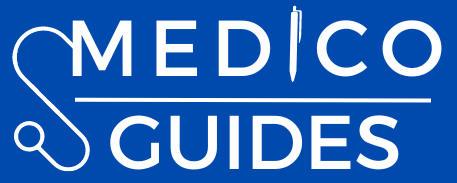1. Introduction
Artificial Intelligence (AI) is fundamentally transforming the pharmaceutical industry, particularly in the field of drug discovery. The application of AI has unlocked new efficiencies, from identifying potential drug targets to optimizing compound structures and predicting efficacy. As global health challenges grow more complex, AI’s role becomes crucial in accelerating the development of safe and effective therapies.
2. Traditional Drug Discovery: Time, Cost, and Complexity
Traditionally, discovering a new drug is an arduous, expensive, and time-consuming process. It typically takes over 10 years and costs upwards of $2.6 billion to bring a single new drug to market. This journey involves identifying biological targets, screening thousands of chemical compounds, conducting extensive laboratory testing, and undergoing rigorous clinical trials. Many potential drugs fail during these stages, often due to inefficacy or unforeseen side effects.
The high failure rate, particularly in late-stage trials, underscores the need for more efficient, predictive, and targeted approaches—something AI excels at.
3. The Role of AI in Modern Drug Discovery
AI provides the computational power and algorithmic intelligence to analyze massive biological datasets quickly and accurately. By utilizing machine learning (ML), natural language processing (NLP), and deep learning, AI systems can:
- Predict drug-target interactions
- Identify off-target effects
- Forecast pharmacokinetics and toxicity
- Optimize molecular structures for enhanced efficacy
These capabilities reduce the trial-and-error nature of drug development and improve the likelihood of clinical success.
4. Data Mining and Target Identification
One of the earliest and most critical steps in drug development is identifying viable targets—typically proteins or genes associated with a disease. AI algorithms can mine medical literature, genomic databases, and clinical trial results to discover novel targets that may not be obvious to human researchers.
For instance, BenevolentAI uses NLP to sift through scientific papers and uncover hidden relationships between genes, diseases, and drugs. This process dramatically shortens the initial phases of drug discovery.
5. AI in Drug Design and Molecular Simulation
Once a target is identified, the next challenge is to design molecules that interact effectively with that target. Traditionally, this involved labor-intensive screening of large chemical libraries. Today, AI models can:
- Predict how molecules will behave based on their structure
- Simulate molecular docking processes
- Design new compounds with desired biological properties
Tools like DeepMind’s AlphaFold, which predicts protein folding with unprecedented accuracy, allow scientists to visualize how drugs will bind to their targets. This precision accelerates the design of highly specific and potent drugs.
6. Accelerating Preclinical Testing with AI
AI models are also applied to preclinical stages, where compounds are tested in vitro (in the lab) and in vivo (in animals). AI can predict:
- Absorption, distribution, metabolism, and excretion (ADME) properties
- Potential toxicities and side effects
- Drug stability and solubility
These predictions help researchers prioritize which candidates should move forward to animal testing and human trials, thereby reducing the resources wasted on ineffective compounds.
7. Case Studies: AI-Driven Success Stories in Drug Discovery
Several companies have demonstrated the power of AI in discovering real-world drugs:
- Insilico Medicine developed a preclinical drug for idiopathic pulmonary fibrosis using AI in under 18 months—a process that typically takes years.
- Exscientia and Sumitomo Dainippon Pharma brought DSP-1181, a compound for treating obsessive-compulsive disorder, to clinical trials in a record 12 months.
These breakthroughs showcase AI’s ability to radically cut development timelines and increase R&D productivity.
8. Reducing Costs and Time-to-Market
By streamlining the drug development pipeline, AI significantly reduces R&D costs. Predictive models decrease the number of failed experiments, while automation accelerates data analysis and decision-making.
Pharmaceutical companies adopting AI estimate cost reductions of up to 30% in early-stage drug discovery. Furthermore, faster development means patients can access life-saving drugs sooner, addressing unmet medical needs more effectively.
9. Challenges and Ethical Considerations
Despite its promise, AI in drug discovery faces several hurdles:
- Data Quality and Bias: AI models are only as good as the data they are trained on. Incomplete or biased datasets can lead to flawed predictions.
- Interpretability: Many AI models operate as “black boxes,” making it hard for scientists to understand how decisions are made.
- Regulatory Barriers: Regulatory frameworks are still evolving to accommodate AI-generated drug candidates, and approval processes must adapt accordingly.
- Intellectual Property Issues: Determining patent rights for AI-designed molecules raises complex legal questions.
Addressing these challenges requires collaboration between technologists, regulators, and bioethicists.
10. Future Trends in AI-Powered Drug Development
The next decade will see even deeper integration of AI into pharmaceutical R&D. Emerging trends include:
- Multi-omics Data Integration: Combining genomics, proteomics, and metabolomics for a holistic understanding of diseases.
- Digital Twins: Creating AI-based virtual replicas of patients to simulate drug responses.
- AI and Quantum Computing: Leveraging quantum computing to solve complex biochemical simulations faster than ever before.
As these technologies mature, drug discovery will become more personalized, predictive, and precise.
11. Conclusion
AI is revolutionizing drug discovery by making it faster, cheaper, and more precise. From identifying novel targets to simulating molecular interactions and predicting side effects, AI streamlines every phase of the drug development pipeline. While challenges remain, the synergy between biology and computational science holds immense potential to deliver better treatments to patients worldwide.
12. FAQs
Q1: How does AI help in drug discovery?
AI helps by analyzing vast biological datasets, identifying drug targets, predicting compound efficacy, and simulating drug interactions.
Q2: Can AI design new drugs from scratch?
Yes, AI can generate novel molecular structures tailored to specific biological targets using generative design algorithms.
Q3: Are any AI-developed drugs already in the market?
Several AI-designed drugs are in clinical trials, and some are expected to reach the market within a few years.
Q4: What are the main benefits of AI in drug development?
The key benefits are reduced costs, shorter development timelines, and increased success rates in clinical trials.
Q5: What are the ethical issues with AI in pharmaceuticals?
Issues include data bias, model transparency, intellectual property rights, and ensuring patient safety in AI-driven trials.

